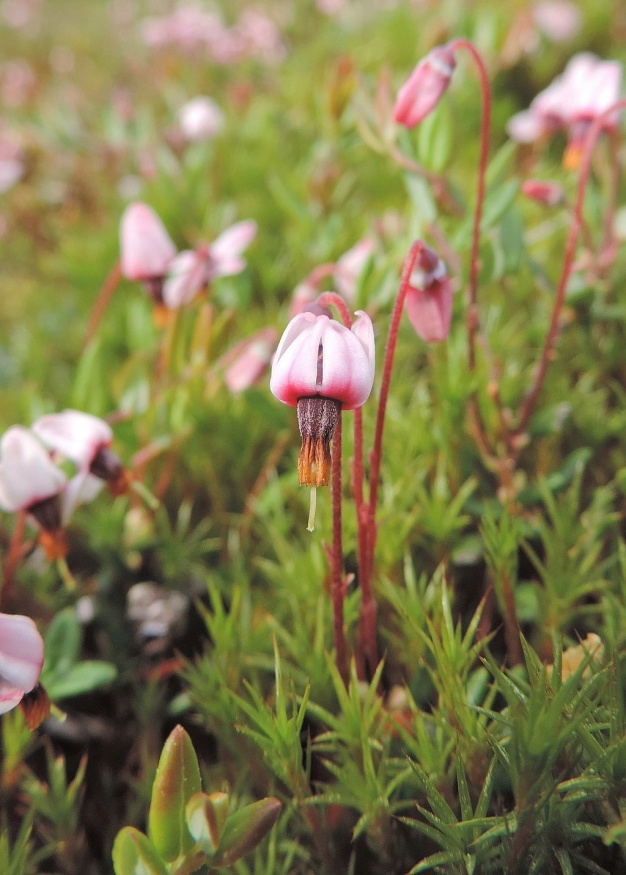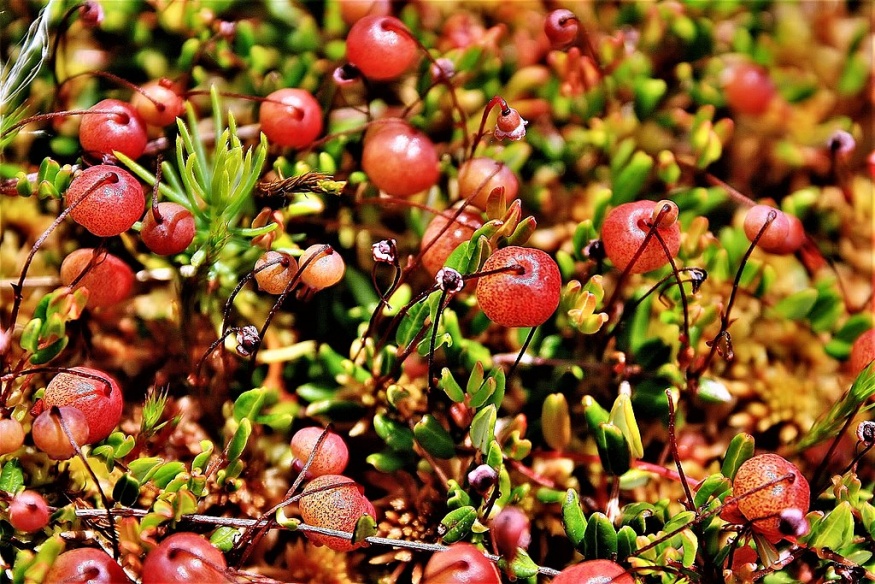About
European cranberry is a prostrate, evergreen shrub with a wide distribution accross the northern hemisphere. This includes North America, Europe, and Asia (circumpolar). It grows in moist to very wet conditions in nitrogen poor acidic peat bogs and coniferous swamps.
Leathery lance shaped leaves are retained all year (evergreen). The colour is dark green and glossy ontop; grayish beneath with margins curled under.
Deep pink flowers on long stalks occur from June to July. Their heads droop to face downwards with petals curled back, revealing long stamens and anthers. Flowers are self pollinating, but assisted by bees. Following flowering, pale pink to deep red berries appear. They ripen from August to October and often persist into the winter. The fruit is smaller than V. macrocarpon (American cranberry), but considered better tasting and often used in jams and jellies. European cranberry is commercially grown for its fruit in Russia, but seldom so in North America. In he wild the berries are only moderately palatable by birds and small mammals.
Tea can be made from the leaves and berries; twigs, and bark can be used medicinally. The shrub doesn't transplant well and is susceptible to many fungal diseases. For this reason and due to special soil requirements, European cranberry is considered considered high maintenance to grow.
References
Fire Effects Information System (FEIS). (n.d.). Vaccinium oxycoccos. Retrieved from https://www.fs.fed.us/database/feis/plants/shrub/vacoxy/all.html
Natural Resource Conservation Service. (n.d.). Vaccinium oxycoccos L. Retrieved from https://plants.usda.gov/core/profile?symbol=vaox
Plants For A Future. (n.d.). Vaccinium oxycoccos - L. Retrieved from https://pfaf.org/user/Plant.aspx?LatinName=Vaccinium+oxycoccos
Klinkenberg, Brian. (Editor) 2020. E-Flora BC: Electronic Atlas of the Plants of British Columbia [eflora.bc.ca]. Lab for Advanced Spatial Analysis, Department of Geography, University of British Columbia, Vancouver. Vaccinium oxycoccos L. Retrieved from http://linnet.geog.ubc.ca/Atlas/Atlas.aspx?sciname=Vaccinium+oxycoccos
Shipping
We currently ship seeds to all Canadian provinces and ship plants just within the provinces of British Columbia and Alberta. Seeds ship year-round and usually take a few days (or longer if you are ordering from a distant province). It usually takes 2-5 business days in the mail for plant orders once shipped. Plants are generally available from May to September and can be reserved during off season; Shipping costs are calculated during checkout. Seed orders over $100 ship free! See Shipping for more details.


